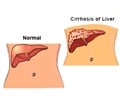Researchers are reporting success with a unique intervention program that has significantly reduced the dangerous practice among its students.
As college campuses nationwide grapple with the problem of binge drinking, University of Texas at El Paso researchers are reporting success with a unique intervention program that has significantly reduced the dangerous practice among its students.
The Brief Alcohol Screening and Intervention for College Students, or BASICS, program assesses students’ drinking habits and identifies those who are binge drinkers or at risk of becoming binge drinkers. Among men, binge drinking is identified as having five or more drinks in one sitting. For women, the measure is four or more drinks.After learning how to properly monitor their drinking, drink in moderation and avoid situations that can result in overdrinking, the number of students in the BASICS program considered “at-risk” for binge drinking has dropped by two-thirds, according to preliminary study results.
“The impact our program has had has been very encouraging,” said Joe Tomaka, Ph.D., a health promotion professor at UTEP and director of the university’s BASICS program.
“We teach them about blood alcohol levels and help them understand how their weight and gender plays a role in this,” Tomaka said. “We talk about how much alcohol various mixed drinks have so that they are better able to measure how much alcohol they’re truly consuming and how it’s affecting their bodies. Our message is that it’s best not to drink, but if you’re going to do it, do it knowing the facts and drink safely, responsibly.”
An urban research university located at the heart of the U.S.-Mexico border, UTEP is one of 15 universities nationwide to receive a grant from the Department of Health and Human Services to implement the model program.
Preliminary results show that a majority of participants in the UTEP BASICS program who were once identified as “at-risk” of becoming binge drinkers have reduced their drinking levels.
Overall, researchers screened about 6,000 of the university’s nearly 20,000 students. Some 470 students have participated in the intervention and educational program since 2006.
Tomaka said the model program was modified to better address and impact UTEP’s dominant minority population – 72.5 percent of its students are Hispanic. In discussing the myths of how to sober up, for example, program administrators remind students that their blood alcohol levels will not decline if they have a bowl of hot menudo, a Mexican tripe stew seasoned with chili peppers.
“Many of the behaviors and perceptions associated with drinking are the same across the board, but we wanted to make some of the program more relevant to our student population and this region,” Tomaka said. “We believe this helps in its effectiveness.”
Source-Newswise
SRM
 MEDINDIA
MEDINDIA
 Email
Email





